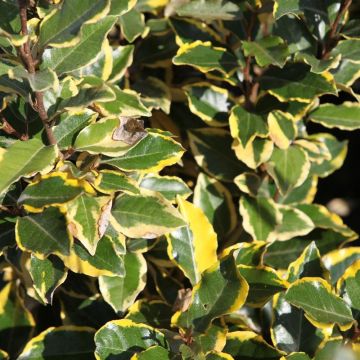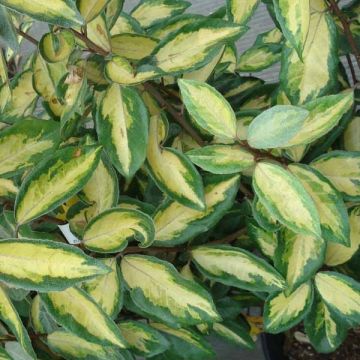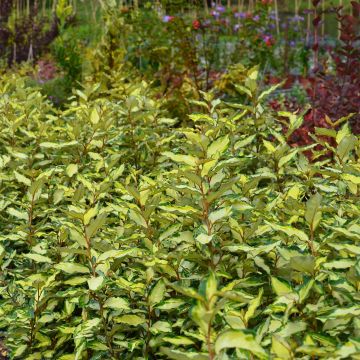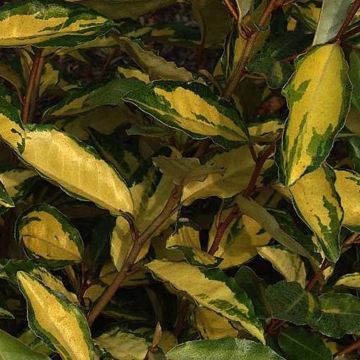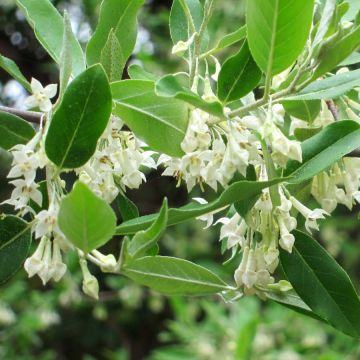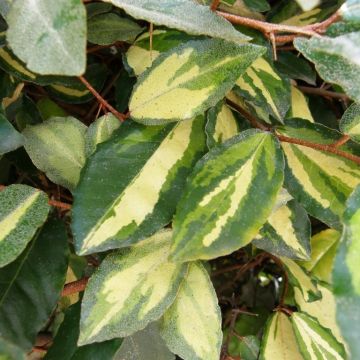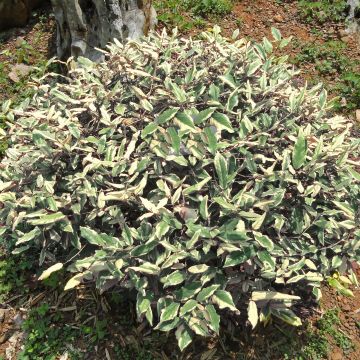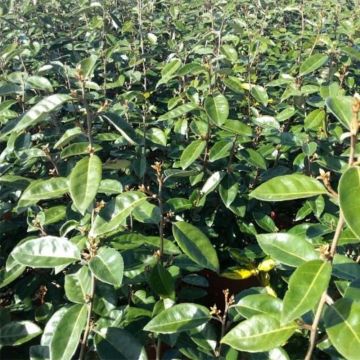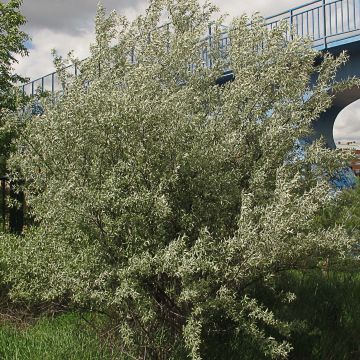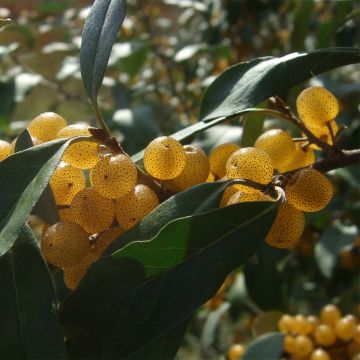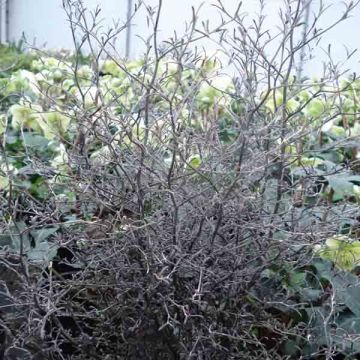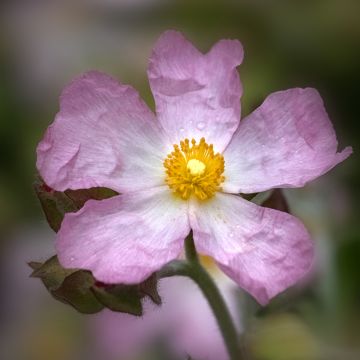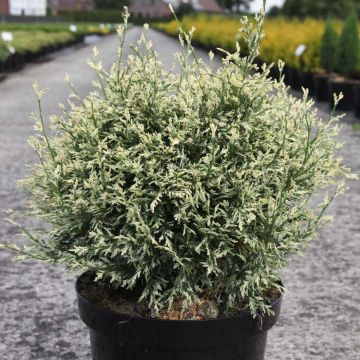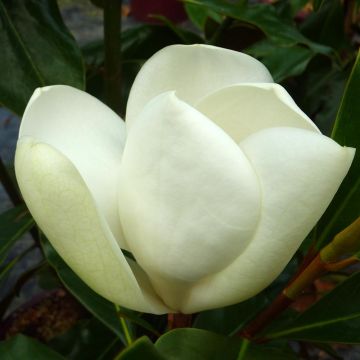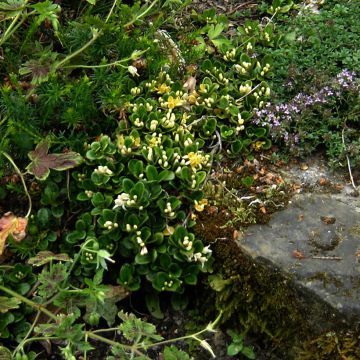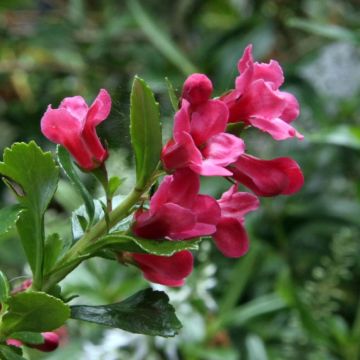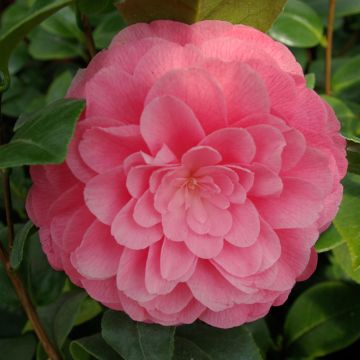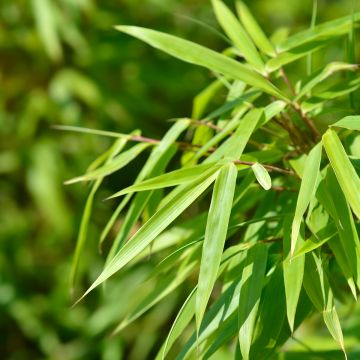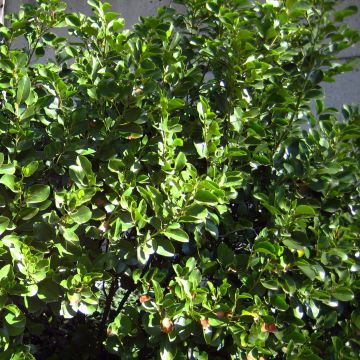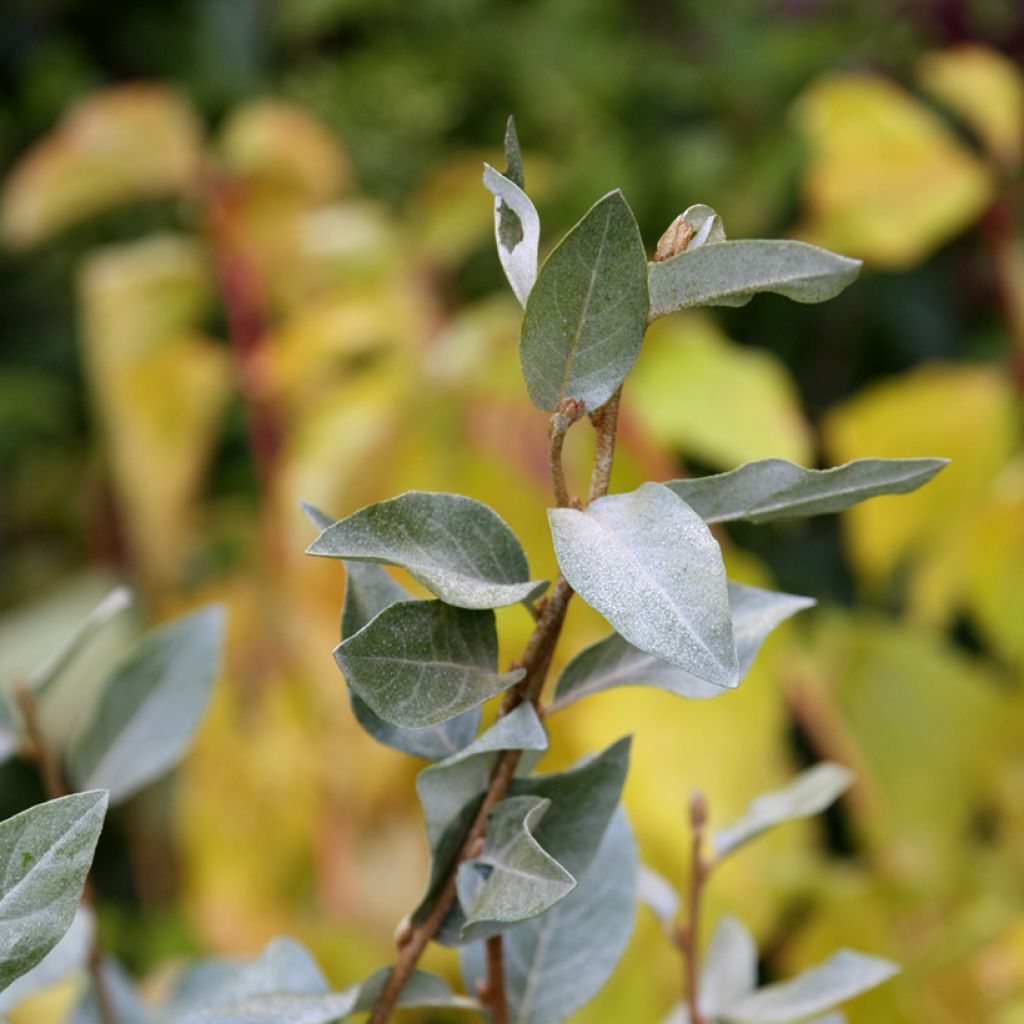

Elaeagnus commutata Zempin - Silverberry
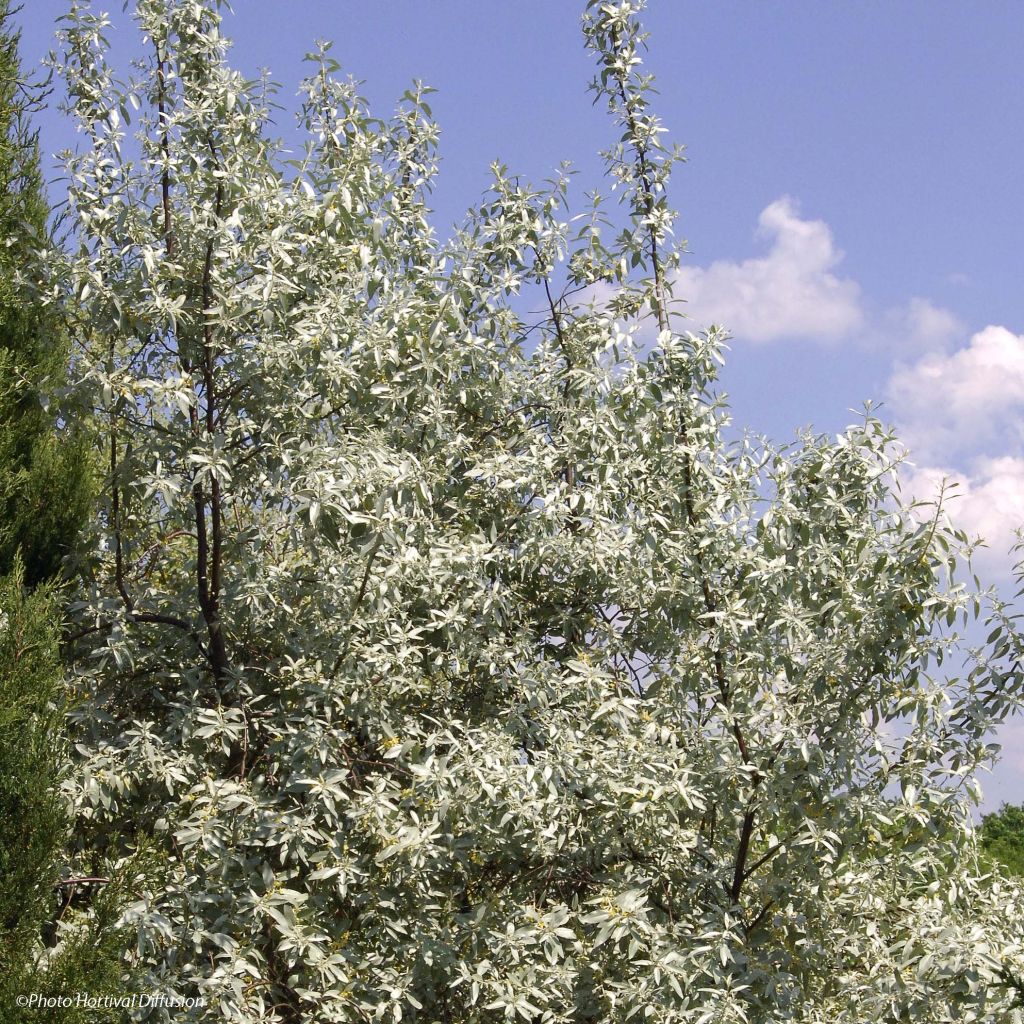

Elaeagnus commutata Zempin - Silverberry
Elaeagnus commutata Zempin - Silverberry
Elaeagnus commutata Zempin
American Silverberry, Silverberry
I really like this variety of chalef (which self-seeds spontaneously and easily) for the delightful fragrance it emits for almost a month. The similarity of its scent to that of benzoin essential oil is striking, and it perfumes the garden for several tens of meters in calm weather. Its habit is not really very beautiful because its long branches grow very fast and in a disorderly manner, but the beauty of its foliage helps forgive this flaw. I have replanted several young plants in very dry areas because in this area, it is really very resistant!
Philippe, 17/11/2023
This item cannot be shipped to the selected country
Delivery charge from €5.90
Delivery to Corse prohibited
More information
Schedule delivery date,
and select date in basket
This plant carries a 24 months recovery warranty
More information
We guarantee the quality of our plants for a full growing cycle, and will replace at our expense any plant that fails to recover under normal climatic and planting conditions.
From €5.90 for pickup delivery and €6.90 for home delivery
Express home delivery from €8.90.
Delivery to Corse prohibited: UE law prohibits the import of this plant from mainland France to Corse as part of the fight against Xylella fastidiosa. Please accept our sincere apologies.
More information

Does this plant fit my garden?
Set up your Plantfit profile →
Description
Elaeagnus commutata Zempin is a beautiful horticultural selection of the Silverberry, originating from Northern Europe. It quickly forms a voluminous bush, adorned with a grey-silver velvety foliage that plays beautifully with the wind and light. Its abundant but discreet flowering reveals a spicy and heavy scent, perceptible from several metres away. Widely used on the shores of the Baltic Sea for its resistance to intense cold and drought, it is a rare and powerful plant, easy to grow and spectacular. It adapts to any ordinary soil, even dry, sandy or wet, and is highly resistant to wind, heat, and sea spray.
The Silverberry, in Latin Elaeagnus argentea or commutata, is a large deciduous bush related to the Bohemian olive tree, from the Elaeagnaceae family, native to Eastern North America and Canada where it grows spontaneously in wet areas (along rivers) but also on grassy slopes and dry meadows. The 'Zempin' cultivar, from which it originates, is a new form discovered in Scandinavia, with non-thorny branches and very silver foliage. It shows rapid growth and forms a dense bush, with a wide but flexible habit, reaching up to 4m (13 ft 1 in) in height and 3m (9 ft 10 in) in width. The sucker-producing stump spreads laterally. Its deciduous foliage persists for a long time before falling. It is composed of entire, lanceolate leaves, 4 to 8 cm (1.6 to 3.1 in) long, a grey and matte colour on the upper side, with a silver and shiny underside. They are borne by dark-coloured, thornless branches, which are decorative in winter. The small, insignificant flowers, silver on the outside and yellowish on the inside, appear at the axil of the leaves, usually in late spring. They are deliciously scented and nectar-bearing and give way to small fruits, of a beautiful dark brown-silver, edible but dry and mealy.
A bush of Elaeagnus Zempin stands out from afar, due to the brightness and radiance of its ever-moving foliage. Its vigour, resistance, and great adaptability make it an excellent hedge or border plant, capable of stabilizing the sandy soils of dunes. It is valuable in a seaside garden or a dry garden, in windy regions. It can be used in a mixed hedge, in the company of other beautiful shrubs such as Abelia x grandiflora, Arbutus unedo, Amelanchier ovalis, Buddleia alternifolia argentea, or even Cistus laurifolius. Note that its resistance to drought allows it to be cultivated in poor, even rocky soils.
Report an error about the product description
Elaeagnus commutata Zempin - Silverberry in pictures
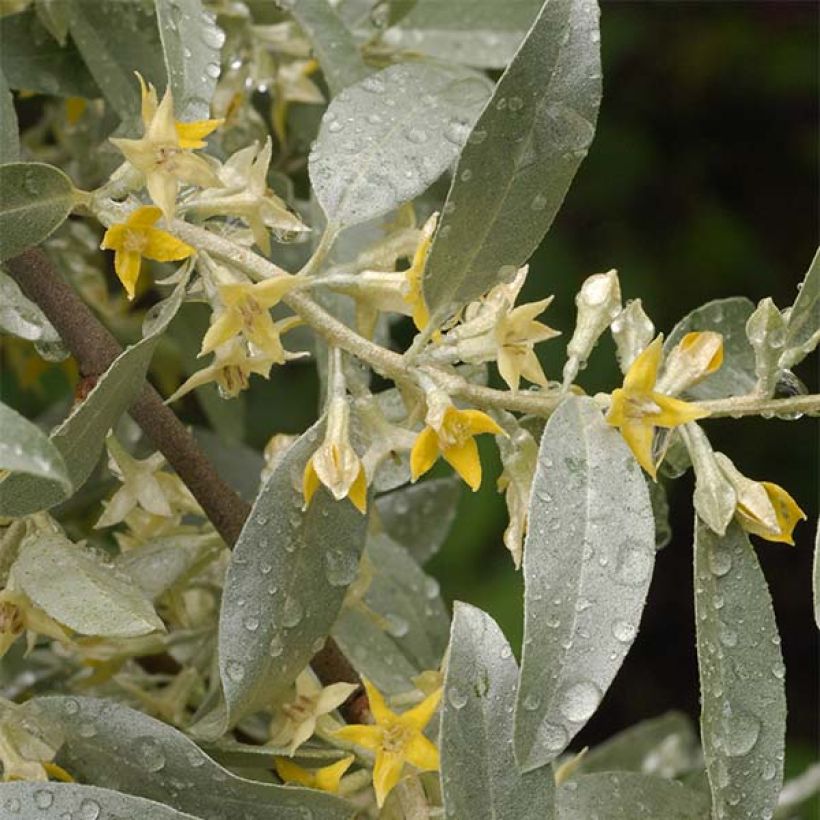

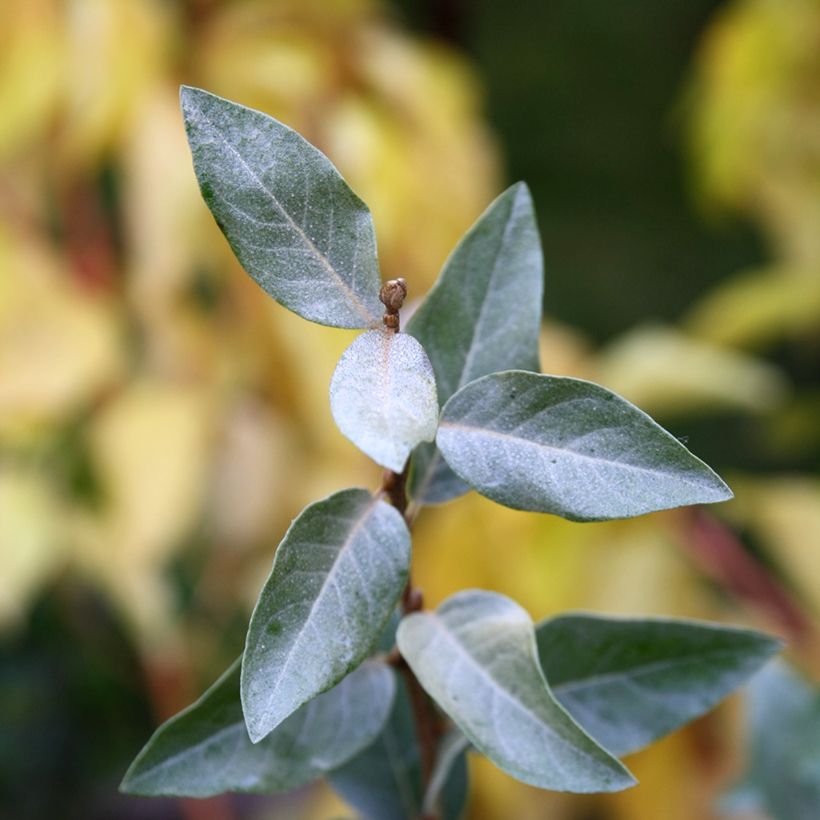

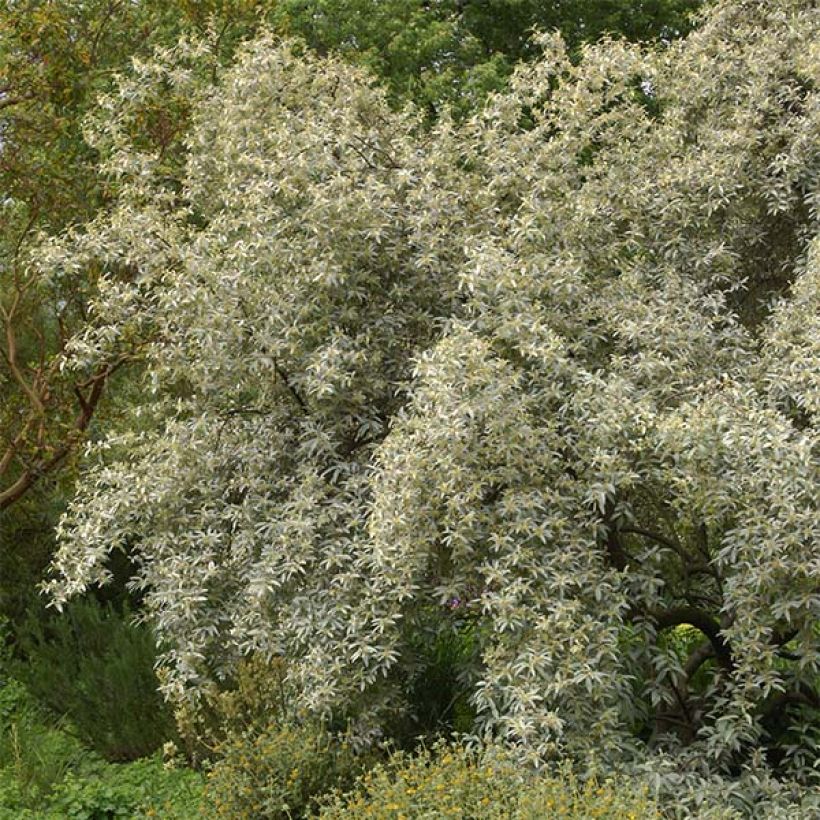

Plant habit
Flowering
Foliage
Botanical data
Elaeagnus
commutata
Zempin
Elaeagnaceae
American Silverberry, Silverberry
Northern Europe
Other Elaeagnus - Oleaster
Planting and care
Plant Elaeagnus commutata Zempin in any soil, even limestone, sandy, dry, damp or moist but loose and well-worked. Once well established, it will completely do without watering, even in hot and dry regions. It will thrive in partial shade (in hot climates) or in full sun, even in windy conditions. In the first few years prune lightly in late winter to train, then just to maintain the shape. Be careful not to dig too close to the stump, in order not to destroy the shoots that allow this large bush to quickly expand.
Planting period
Intended location
Care
-
, onOrder confirmed
Reply from on Promesse de fleurs
Evergreen shrubs
Haven't found what you were looking for?
Hardiness is the lowest winter temperature a plant can endure without suffering serious damage or even dying. However, hardiness is affected by location (a sheltered area, such as a patio), protection (winter cover) and soil type (hardiness is improved by well-drained soil).

Photo Sharing Terms & Conditions
In order to encourage gardeners to interact and share their experiences, Promesse de fleurs offers various media enabling content to be uploaded onto its Site - in particular via the ‘Photo sharing’ module.
The User agrees to refrain from:
- Posting any content that is illegal, prejudicial, insulting, racist, inciteful to hatred, revisionist, contrary to public decency, that infringes on privacy or on the privacy rights of third parties, in particular the publicity rights of persons and goods, intellectual property rights, or the right to privacy.
- Submitting content on behalf of a third party;
- Impersonate the identity of a third party and/or publish any personal information about a third party;
In general, the User undertakes to refrain from any unethical behaviour.
All Content (in particular text, comments, files, images, photos, videos, creative works, etc.), which may be subject to property or intellectual property rights, image or other private rights, shall remain the property of the User, subject to the limited rights granted by the terms of the licence granted by Promesse de fleurs as stated below. Users are at liberty to publish or not to publish such Content on the Site, notably via the ‘Photo Sharing’ facility, and accept that this Content shall be made public and freely accessible, notably on the Internet.
Users further acknowledge, undertake to have ,and guarantee that they hold all necessary rights and permissions to publish such material on the Site, in particular with regard to the legislation in force pertaining to any privacy, property, intellectual property, image, or contractual rights, or rights of any other nature. By publishing such Content on the Site, Users acknowledge accepting full liability as publishers of the Content within the meaning of the law, and grant Promesse de fleurs, free of charge, an inclusive, worldwide licence for the said Content for the entire duration of its publication, including all reproduction, representation, up/downloading, displaying, performing, transmission, and storage rights.
Users also grant permission for their name to be linked to the Content and accept that this link may not always be made available.
By engaging in posting material, Users consent to their Content becoming automatically accessible on the Internet, in particular on other sites and/or blogs and/or web pages of the Promesse de fleurs site, including in particular social pages and the Promesse de fleurs catalogue.
Users may secure the removal of entrusted content free of charge by issuing a simple request via our contact form.
The flowering period indicated on our website applies to countries and regions located in USDA zone 8 (France, the United Kingdom, Ireland, the Netherlands, etc.)
It will vary according to where you live:
- In zones 9 to 10 (Italy, Spain, Greece, etc.), flowering will occur about 2 to 4 weeks earlier.
- In zones 6 to 7 (Germany, Poland, Slovenia, and lower mountainous regions), flowering will be delayed by 2 to 3 weeks.
- In zone 5 (Central Europe, Scandinavia), blooming will be delayed by 3 to 5 weeks.
In temperate climates, pruning of spring-flowering shrubs (forsythia, spireas, etc.) should be done just after flowering.
Pruning of summer-flowering shrubs (Indian Lilac, Perovskia, etc.) can be done in winter or spring.
In cold regions as well as with frost-sensitive plants, avoid pruning too early when severe frosts may still occur.
The planting period indicated on our website applies to countries and regions located in USDA zone 8 (France, United Kingdom, Ireland, Netherlands).
It will vary according to where you live:
- In Mediterranean zones (Marseille, Madrid, Milan, etc.), autumn and winter are the best planting periods.
- In continental zones (Strasbourg, Munich, Vienna, etc.), delay planting by 2 to 3 weeks in spring and bring it forward by 2 to 4 weeks in autumn.
- In mountainous regions (the Alps, Pyrenees, Carpathians, etc.), it is best to plant in late spring (May-June) or late summer (August-September).
The harvesting period indicated on our website applies to countries and regions in USDA zone 8 (France, England, Ireland, the Netherlands).
In colder areas (Scandinavia, Poland, Austria...) fruit and vegetable harvests are likely to be delayed by 3-4 weeks.
In warmer areas (Italy, Spain, Greece, etc.), harvesting will probably take place earlier, depending on weather conditions.
The sowing periods indicated on our website apply to countries and regions within USDA Zone 8 (France, UK, Ireland, Netherlands).
In colder areas (Scandinavia, Poland, Austria...), delay any outdoor sowing by 3-4 weeks, or sow under glass.
In warmer climes (Italy, Spain, Greece, etc.), bring outdoor sowing forward by a few weeks.

































